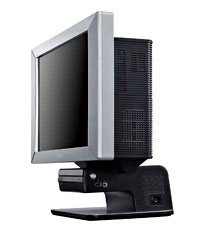 Sony has announced the new VAIO VA1 Series, a wireless home entertainment desktop computer.
Sony has announced the new VAIO VA1 Series, a wireless home entertainment desktop computer.
Looking like it was knocked out by designers in a hurry to get home, the chunky machine seems to lack Sony’s usual flair for design, but underneath the less-than-glamorous exterior lurks a novel hybrid machine, boasting analogue and digital TV tuners, a DVD rewriter and capacious hard drive.
The display is a big Sony 20″ screen with true 16:9 aspect ratio, X-black technology and double lamp illumination, with a nippy 2.8GHz Pentium D 820 processor powering the PC.
Graphics are taken care of courtesy of an ATI Mobility Radeon X700 with 128MB RAM, with the integrated TV tuner offering both analogue and digital channels, with built in Freeview.
Running on Microsoft Windows XP Media Centre Edition, there’s a high capacity 250GB hard drive inside and a dual layer DVD DVD±RW rewriter, capable of recording up to four hours of DVD-quality TV in one go.
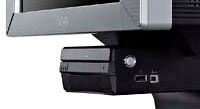 High definition audio is provided by Sony’s Direct Stream Digital (DSD), a technology developed by Sony in conjunction with Philips.
High definition audio is provided by Sony’s Direct Stream Digital (DSD), a technology developed by Sony in conjunction with Philips.
Despite its all-in construction, some expandability options are provided with space for a second hard disk and slots for more RAM.
In line with its home entertainment pretensions, the machine includes a wireless keyboard with built in touchpad, a wireless mouse and remote control.And to keep things neat and tidy, the whole caboodle uses a single plug. Nice.
Full details, comprehensive specs and product photos are (as you can see) somewhat thin on the ground as we went to press, but we’ve heard that the Sony VA1 should be available from February, priced at around £1,500 ($2,620, €2.185).
 Sky has announced three of its top Exec will be altering roles, we suspect, as they prepare to become more than just a satellite TV company.
Sky has announced three of its top Exec will be altering roles, we suspect, as they prepare to become more than just a satellite TV company. We think Mike Darcey sounds like he’s going to have the most fun, and certainly the most toys to play with.
We think Mike Darcey sounds like he’s going to have the most fun, and certainly the most toys to play with. T-Mobile was told to see the headmaster and returned with a derrier rouge after making exaggerated claims about its “web’n’walk” mobile Internet service.In a wave of PR-driven hyperbole
T-Mobile was told to see the headmaster and returned with a derrier rouge after making exaggerated claims about its “web’n’walk” mobile Internet service.In a wave of PR-driven hyperbole  T-Mobile had a valiant stab at a defence, arguing that their advert was all about making the distinction between Ye Olde Crappe WAP and their new, full Internet-access, web’n’walk service, adding that they had included the line, “subject to coverage”.
T-Mobile had a valiant stab at a defence, arguing that their advert was all about making the distinction between Ye Olde Crappe WAP and their new, full Internet-access, web’n’walk service, adding that they had included the line, “subject to coverage”. To the sound of a salvo of slapped wrists, the statement concluded that the ad, “was misleading because readers were likely to interpret the claim to refer to geographical network coverage. We told T-Mobile to avoid making such unconditional claims in future advertising.”
To the sound of a salvo of slapped wrists, the statement concluded that the ad, “was misleading because readers were likely to interpret the claim to refer to geographical network coverage. We told T-Mobile to avoid making such unconditional claims in future advertising.” Apple have announced a competition to become the downloader of the 1 Billion th music track on iTMS.
Apple have announced a competition to become the downloader of the 1 Billion th music track on iTMS.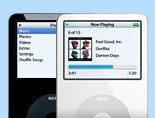 At the time of writing, we see on the live track count that they’ve sold just short of 950,981,000 tracks.
At the time of writing, we see on the live track count that they’ve sold just short of 950,981,000 tracks. You know we like to save you money when we can and for those with sharp eyes, you’ll see near at the bottom of the page in light grey (thanks Apple), “*No purchase necessary to win. Click here to submit a free entry form.” Following the link takes you to the form telling that you can indeed make up to 25 free entries a day. We’re not sure on the US rules for competitions, but we know in the UK that free entry is essential when there’s no skill involved with entering the competition.
You know we like to save you money when we can and for those with sharp eyes, you’ll see near at the bottom of the page in light grey (thanks Apple), “*No purchase necessary to win. Click here to submit a free entry form.” Following the link takes you to the form telling that you can indeed make up to 25 free entries a day. We’re not sure on the US rules for competitions, but we know in the UK that free entry is essential when there’s no skill involved with entering the competition.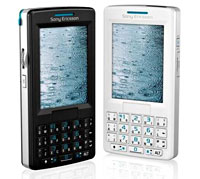 Sony Ericsson have announced their new M600 handset, a tri-band (900/1800/1900 plus UMTS 2100 for 3G data outside the US) jobbie, with Symbian OS 9.1 and UIQ 3.0 operating systems.
Sony Ericsson have announced their new M600 handset, a tri-band (900/1800/1900 plus UMTS 2100 for 3G data outside the US) jobbie, with Symbian OS 9.1 and UIQ 3.0 operating systems.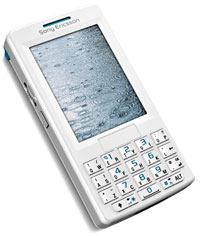 Touted as a “fully-specified email tool and mobile phone”, the handset offers true multitasking, so a user can, for example, browse the Internet while chatting away on the phone.
Touted as a “fully-specified email tool and mobile phone”, the handset offers true multitasking, so a user can, for example, browse the Internet while chatting away on the phone.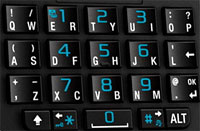 For road warriors and shuffling suits, there’s the facility to read and edit PowerPoint, Word and Excel documents and Adobe PDF files on the move, with the popular Opera 8 browser provided for surfing the Internet.
For road warriors and shuffling suits, there’s the facility to read and edit PowerPoint, Word and Excel documents and Adobe PDF files on the move, with the popular Opera 8 browser provided for surfing the Internet.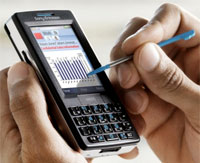 In line with its business focus, there’s no built in camera, and Wi-Fi is an unfortunate omission too.
In line with its business focus, there’s no built in camera, and Wi-Fi is an unfortunate omission too.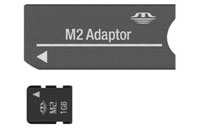 If you’ve owned a few digital cameras or PDAs and switched brands a couple of times over the years, you’ll probably already have a formidable collection of non-compatible memory cards wasting away in your drawer.
If you’ve owned a few digital cameras or PDAs and switched brands a couple of times over the years, you’ll probably already have a formidable collection of non-compatible memory cards wasting away in your drawer.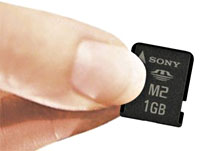 Much as we hate to give any kudos to yet another memory card format, that’s a mighty impressive capacity and offers enough storage space to turn mobile phones into fully fledged, iPod-worrying MP3 players.
Much as we hate to give any kudos to yet another memory card format, that’s a mighty impressive capacity and offers enough storage space to turn mobile phones into fully fledged, iPod-worrying MP3 players. It looks like the world is going blog crazy as the number of blogs online doubles every five and a half months, with a brand new blog being created every second.
It looks like the world is going blog crazy as the number of blogs online doubles every five and a half months, with a brand new blog being created every second.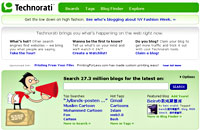 According to Technorati, around 2.7 million of those blogs are updated at least weekly, with something like 1.2 million total posts appearing every single day. New blogs are appearing at a rate of over 75,000 every day with an average of fifty thousand blog posts being recorded every hour.
According to Technorati, around 2.7 million of those blogs are updated at least weekly, with something like 1.2 million total posts appearing every single day. New blogs are appearing at a rate of over 75,000 every day with an average of fifty thousand blog posts being recorded every hour. It’s not all good news though, with Sifry revealing that “about 9% of new blogs are spam or machine generated, or are attempts to create link farms or click fraud.”
It’s not all good news though, with Sifry revealing that “about 9% of new blogs are spam or machine generated, or are attempts to create link farms or click fraud.”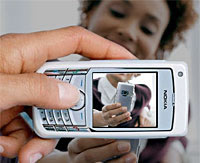 Although cameras are considered to be an essential part of modern mobile phones, a new study has revealed that only a tiny percentage of camera phone snaps are actually being stored or sent.
Although cameras are considered to be an essential part of modern mobile phones, a new study has revealed that only a tiny percentage of camera phone snaps are actually being stored or sent.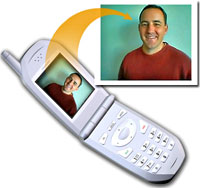 “However, once they start using their new phones, they are turned off by perceived poor picture quality, slow network speeds, and the difficulty of creating and sending pictures. Our survey found that very few pictures actually make their way out of the handset to be shared with others,” he commented.
“However, once they start using their new phones, they are turned off by perceived poor picture quality, slow network speeds, and the difficulty of creating and sending pictures. Our survey found that very few pictures actually make their way out of the handset to be shared with others,” he commented. After seeing the dire quality of the pictures taken with our
After seeing the dire quality of the pictures taken with our  Consumers wanting to be able to take and send decent quality photos are hit by a double whammy: camera phones capable of taking high quality phones aren’t cheap, and the higher resolution files they create end up costing a bomb in network carrier costs. Best solution? Take along a ‘real’ camera and email it when you get home.
Consumers wanting to be able to take and send decent quality photos are hit by a double whammy: camera phones capable of taking high quality phones aren’t cheap, and the higher resolution files they create end up costing a bomb in network carrier costs. Best solution? Take along a ‘real’ camera and email it when you get home. Internet big boys Google and Skype have teamed up with two venture capital firms, Index Ventures and Sequoia Capital, to invest a mighty wedge into Fon Technology, a Spanish startup looking to build a global network of Wi-Fi hotspots.
Internet big boys Google and Skype have teamed up with two venture capital firms, Index Ventures and Sequoia Capital, to invest a mighty wedge into Fon Technology, a Spanish startup looking to build a global network of Wi-Fi hotspots. For Google and Skype, a deal with FON makes their web-based services more ubiquitously available, with developers gaining access to a new platform for creating and delivering services on a global scale.
For Google and Skype, a deal with FON makes their web-based services more ubiquitously available, with developers gaining access to a new platform for creating and delivering services on a global scale.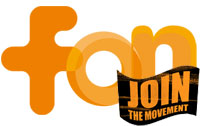 “As we continue to grow, we will attract consumers for all three foneros categories and achieve our goal of creating a global WiFi nation. This is a great opportunity for ISP’s, bloggers, developers, early adopters, consumer electronics manufacturers and the ‘average Joe or Jane’ with a WiFi connection to make money by letting other foneros connect to the Net safely and simply,” he continued.
“As we continue to grow, we will attract consumers for all three foneros categories and achieve our goal of creating a global WiFi nation. This is a great opportunity for ISP’s, bloggers, developers, early adopters, consumer electronics manufacturers and the ‘average Joe or Jane’ with a WiFi connection to make money by letting other foneros connect to the Net safely and simply,” he continued.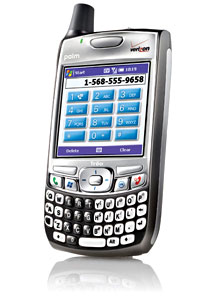 It’s been spluttering and wheezing in its sick bed for what seems like an eternity, but the latest figures from research firm IDC confirm that the prognosis isn’t good for the Personal Digital Assistant (PDA).
It’s been spluttering and wheezing in its sick bed for what seems like an eternity, but the latest figures from research firm IDC confirm that the prognosis isn’t good for the Personal Digital Assistant (PDA).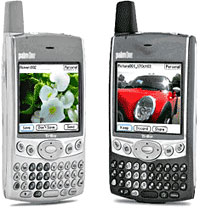 Although a bright Christmas period saw sales grow 37.6% over Q3, the trend remains resolutely downward, with the declining market segment driving PDAs into a market niche.
Although a bright Christmas period saw sales grow 37.6% over Q3, the trend remains resolutely downward, with the declining market segment driving PDAs into a market niche.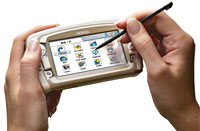 But don’t go ordering flowers for the PDA funeral quite yet, as IDC research analyst Ramon Llamas insists that it’s not all over for the PDA market, with plenty of smaller vendors remaining committed to a more niche PDA market.
But don’t go ordering flowers for the PDA funeral quite yet, as IDC research analyst Ramon Llamas insists that it’s not all over for the PDA market, with plenty of smaller vendors remaining committed to a more niche PDA market.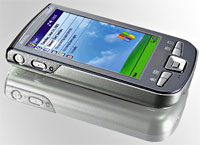 With Palm winding down its PDA business and concentrating on its Treo smartphone range, Nelson argues that Palm will have difficulty competing against deep-pocketed rivals like Dell and HP who are currently ploughing big R&D budgets into similar products.
With Palm winding down its PDA business and concentrating on its Treo smartphone range, Nelson argues that Palm will have difficulty competing against deep-pocketed rivals like Dell and HP who are currently ploughing big R&D budgets into similar products.